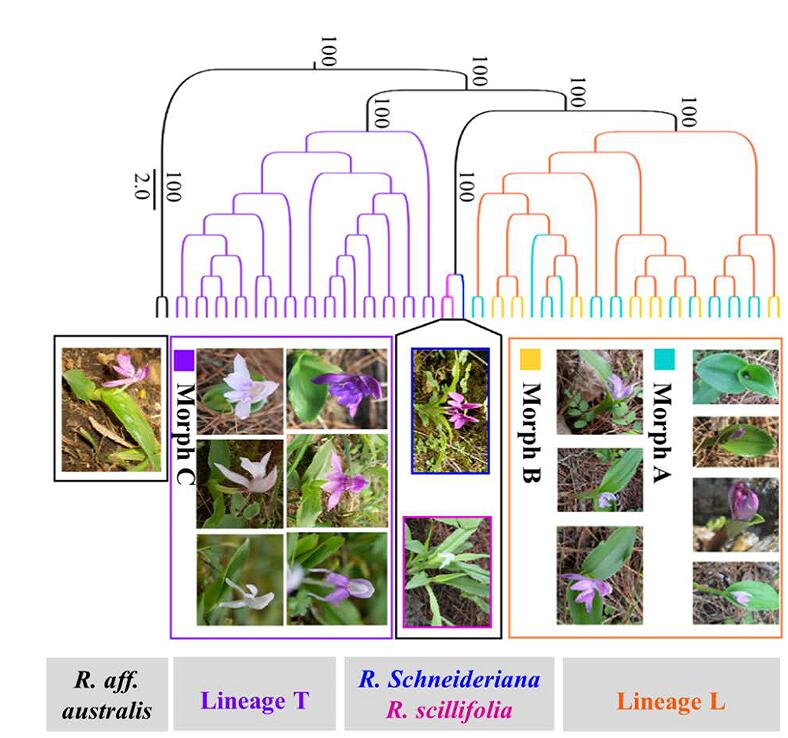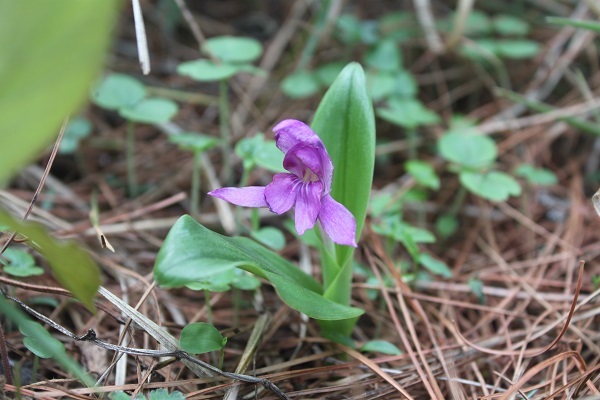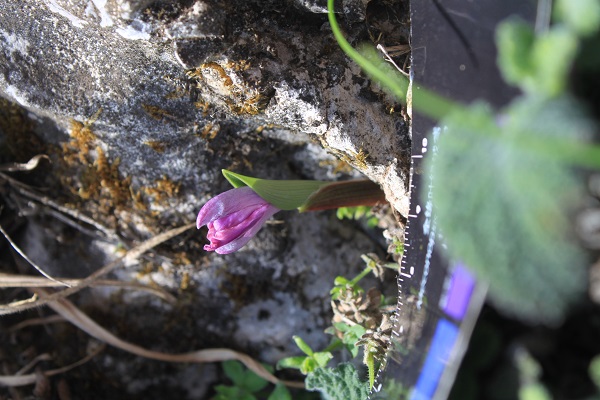The alpine ginger Roscoea tibetica Batalin is the most widespread and extensively phenotypic-variable herbaceous species in Roscoea in the Hengduan Mountains. Diverse phenotypic variations in one population and similar habitat make this species difficult to be identified, especially during the non-flowering phase.
In a study published in Journal of Systematics & Evolution, researchers tried to rule out how many evolutionary lineages/species are there in R. tibetica, by integrating genomic data, morphological traits and ecological evidence of species distribution models (SDMs).
Roscoea tibetica was classified into two monophyletic groups with 100% supported value in the phylogenetic tree. He researchers named the two monophyletic groups lineage L and lineage T.
Individuals in the lineage L were always recognized as R. tibetica (lineage T) in the field, because morph A, B and C comprised cryptic diversity of R. tibetica. However, phylogenomic reconstruction, genetic structure analysis, and species distribution models indicated that the previously reported R. tibetica taxon in fact comprised two species.
Species distribution models illustrated significant ecological divergence between both lineages. Model test of gene flow and effective population size changes in fastsimcoal2, and a negative Tajima's D value suggested that recent contact likely occurred between the two lineages.
Although the rediscovered morphological traits of previously reported R. tibetica could be divided into three groups which comprised of cryptic diversity, two non-sister monophyletic lineages were indicated based on genomic-level variations with significant ecological niche divergence.
Thus, a novel species should be proposed from previously reported R. tibetica, where lineage T is R. tibetica Batalin and lineage L is a new species. The new species was named Roscoea lingbaoshanensis.
“This study reminded us that accurate species delimitation should be done before further research was carried out on widespread species with diverse morphology,” said LI Li, a Ph.D candidate of Xishuangbanna Tropical Botanical Garden (XTBG).
The study was jointly completed by researchers from XTBG and Yunnan University.
Contact
LI Li
Key Laboratory of Tropical Forest Ecology, Xishuangbanna Tropical Botanical Garden, Chinese Academy of Sciences, Mengla, Yunnan 666303, China
E-mail: lili@xtbg.ac.cn

Diverse morphological individuals of Roscoea tibetica in morph A, B and C observed in field. (Image by LI Li)

Roscoea tibetica (Image by LI Li)

Roscoea lingbaoshanensis. (Image by LI Li)



